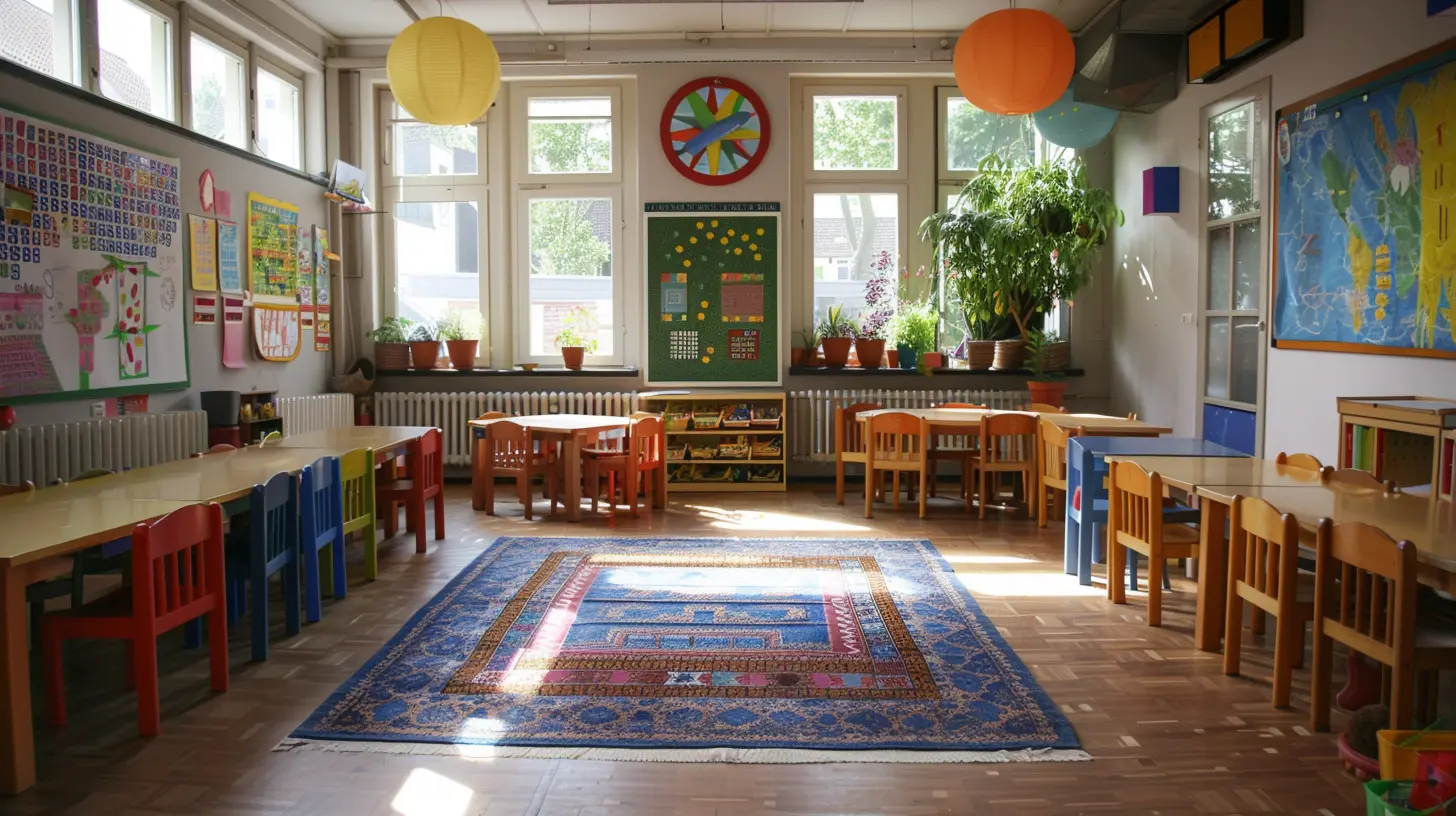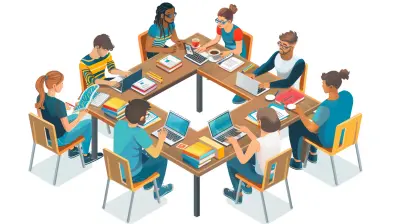Tips for Teaching in a Multilingual Classroom
8 November 2025
Have you ever found yourself standing in front of a classroom where your students speak multiple languages, come from diverse backgrounds, and carry a mix of cultural values? If yes, you’re not alone. Teaching in a multilingual classroom isn’t just about juggling languages—it’s about creating an inclusive learning space where every student, regardless of their language proficiency, feels seen and heard.
Sounds like a tall task, right? Don’t sweat it. With the right strategies and mindset, you can turn what might seem like a challenge into one of the most enriching and rewarding teaching experiences.
Let’s dive into some tried-and-true tips that can help you navigate the colorful and dynamic world of a multilingual classroom.
Why Multilingual Classrooms Are the New Norm
Before we get into the how, let’s talk about the why. Thanks to globalization, immigration, and mobility in the digital age, classrooms today are more diverse than ever. This means students often come in speaking Spanish, Mandarin, Arabic, Swahili, French—you name it—all in the same room.And that’s not a bad thing. In fact, it’s a beautiful opportunity.
Multilingual environments teach empathy, promote cultural exchange, and prepare students for a globalized world. But as a teacher, you’ve got to be ready to meet these students where they are—linguistically and culturally.
1. Embrace the Diversity, Don’t Ignore It
Let’s be honest. It’s tempting to treat everyone the same just to keep things simple. But “equal” isn’t always “fair.”Instead of pretending language differences don’t exist, celebrate them! If one of your students is fluent in Hindi, another in Tagalog, and another in Portuguese, make space for those languages in your classroom. It could be as simple as displaying welcome signs in different languages or having mini cultural show-and-tell days.
By honoring their backgrounds, you’re saying, “Hey, your culture and language matter here.” That kind of validation builds trust and boosts morale.
2. Make Language Learning a Two-Way Street
You’re the teacher, sure. But that doesn’t mean you can’t learn a few words from your students too.Let’s say you’re teaching a science concept. Why not ask students to share the word for “photosynthesis” in their native languages? Imagine how powerful that moment is for a student who rarely hears their language spoken in school.
This approach not only encourages participation but also helps native English speakers appreciate linguistic diversity. Plus, it turns your classroom into a lively language lab—no heavy textbooks required.
3. Visuals Are Your Best Friend
Ever heard the saying, “A picture is worth a thousand words”? Well, in multilingual classrooms, it might be worth even more.Let’s face it—words can get lost in translation. But a well-placed image, diagram, or even a short video can bridge that gap instantly. Whether you’re teaching math, history, or literature, visual aids can make abstract ideas click.
Pro Tip: Use infographics, charts, realia (real-life objects), and gestures to reinforce your teaching. Think of them like subtitles for your lesson.
4. Differentiate Like a Pro
Not all students are at the same level—and when you add language differences to the mix, that gap can widen fast.So, what do you do? You differentiate.
That might mean:
- Providing bilingual worksheets
- Offering audio versions of reading materials
- Giving extra time for written responses
- Using simpler instructions with visuals for newcomers
The goal? Equal access to content. Think of it like offering different sizes of life jackets on a boat—everyone stays afloat, no matter where they started.
5. Scaffold Everything (Like You're Building a Language Bridge)
Imagine you’re hiking up a big mountain. You wouldn’t do it all in one step, right? You’d take it bit by bit. That’s scaffolding!In teaching, scaffolding means breaking lessons into manageable steps. For multilingual students, this could look like:
- Pre-teaching vocabulary before a reading
- Using sentence starters during writing assignments
- Partnering students with bilingual peers for support
These tactics reduce overwhelm and build confidence. It’s like giving your students a ladder to reach the top instead of expecting them to jump.
6. Create a Safe Space for Language Practice
Is there anything more nerve-wracking than speaking in a language you're still learning—especially in front of others?One of the best things you can do is foster a low-pressure environment where mistakes are part of the process. That might mean implementing “no correction” zones during certain speaking activities or allowing written assignments in a student’s home language from time to time.
Remember, fluency isn’t instant. It takes time, courage, and a whole lot of practice.
7. Tap into Technology
Let’s be real—technology can be a game-changer in the multilingual classroom.From translation tools to language learning apps, there's a digital solution for almost everything. A few tools to keep in your virtual toolbox:
- Google Translate (for quick translations)
- Duolingo (for language practice)
- Rewordify (to simplify English texts)
- Quizlet (for building vocabulary)
Bonus tip: Let students teach you their favorite tools too. There are always new apps popping up, and chances are, your students are already experts.
8. Use Collaborative Learning
Here’s a hidden gem: peer learning.When students work together, magic happens. Pairing English language learners (ELLs) with native speakers can create a mutual learning exchange. One student might offer strong vocabulary skills; another might bring cultural insight. Together, they complement each other.
Plus, cooperative learning builds friendships and fosters empathy. And let’s be real—we all learn better when we’re learning with someone else.
9. Keep Parents in the Loop
Newsflash: Parental involvement matters—even more so in multilingual communities.Sometimes, parents who don't speak English might feel disconnected from their child’s education. That’s where you come in.
Try these:
- Translate newsletters or use multilingual communication apps like TalkingPoints
- Host multicultural nights to foster community
- Offer interpreters during parent-teacher meetings
When families feel included, students thrive. It’s that simple.
10. Keep Evolving
Last but not least—never stop learning yourself. The multilingual classroom is constantly changing, and so should your teaching strategies.Read books, join forums, take workshops, swap ideas with peers, and most importantly, listen to your students. They’re your best teachers when it comes to figuring out what works and what doesn’t.
Real Stories, Real Impact
Let me tell you about Ms. L, a middle school teacher in a highly diverse urban school. Her class included students from 11 different countries. Instead of shying away from the challenge, she leaned in.Each month, she’d spotlight a student’s native country—complete with food, music, and short language lessons. Not only did it build pride for her multilingual learners, but it also sparked curiosity in her entire class. Academic performances improved, discipline issues dropped, and the sense of community soared.
The moral? When you recognize your students’ identities, they rise to the occasion.
Final Thoughts
Teaching in a multilingual classroom isn't always neat and tidy. It’s messy, unpredictable, and downright hard sometimes. But it’s also heartwarming, perspective-shifting, and beyond rewarding.You’re not just teaching subjects—you’re teaching human beings. Each one with a story, a language, and a voice that deserves to be heard.
So keep adapting. Keep learning. And most importantly, keep believing in the power of multilingual education.
You’ve got this.
all images in this post were generated using AI tools
Category:
Teacher ResourcesAuthor:

Fiona McFarlin
Discussion
rate this article
1 comments
Ethan Porter
This article offers valuable strategies for navigating the complexities of multilingual classrooms. Emphasizing cultural inclusivity and differentiated instruction can foster a supportive learning environment that respects diverse backgrounds while enhancing language acquisition and engagement for all students.
November 15, 2025 at 6:02 AM

Fiona McFarlin
Thank you for your insightful comment! I'm glad you found the strategies valuable for fostering inclusivity and enhancing language acquisition in multilingual classrooms.


